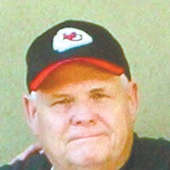The magical basement
A friend of mine recently related an experience where they discovered that a cabin they rented had an open shower with no curtains or shower doors. This triggered in my memory a similar shower from my youth. That shower was in the basement of the first home I ever remember, a place of many diverse and interesting apparatuses.
My parents had built this new home on our farm, when I was near my second birthday, thus it is for the most part the first home I remember. The house itself was, by today's standards, quite small.
It had three small bedrooms, one bathroom, a living room and a kitchen. I was always told that the house was a prefabricated affair. My father had a basement dug and poured, then the larger wall and flooring segments, were bolted in place. I'm not sure where they bought the home, but you could literally buy one from a catalog like Sears if you wanted to back then.
The bathroom had only a bathtub without a shower. If you wanted a shower you had to descend into the extraordinary underground facility: our basement. That basement made many impressions upon me as a child.
First of course was the shower. In the northwest corner of the subterranean understructure, the concrete floor had been purposely slanted downward to allow the water to flow into an exit drain. This drain had no grate. Instead it was just a slanted hole leading to an underground pipe of about 4 inches in size.
When not in use, the pipe entrance was kept plugged with heavy canvas that fit securely in the opening. When we wanted to take a shower, the plug was removed. As kids we loved to take showers there. We were able to take a shower and play at the same time.
My mother had her old fashioned wringer washer in the same area of the basement. She would put clothes into the washer, then the wringing and rinsing process began.
Each clothing item was put through the mechanical wringer to press out most of the sudsy water. My mother would often have us help her. The first metal tube held plain cold water only. We would swirl the clothes and try to get as much of the suds out as possible. Then these clothes were again run through the wringer.
The second tub was the final rinse basin. Clothes taken from here went through the wringer, then pinned to a clothesline for drying. The last load of clothes was usually white. My mother would often let me pour some liquid into the rinse tub. This was called bluing, which was used to get white clothes really bright.
Clothes were hung on the outside clothes lines for drying. In the warm windy summer months this did not take long, and there is a certain smell that air dried clothes have that cannot be duplicated in a modern day dryer.
In winter or on rainy days, my father had hung clothesline wire from the bottom of the floor joists in the basement. Rows of freshly washed clothes hung there until dry.
Our basement had a machine called a milk separator. We had one Guernsey milk cow that gave us lots of rich milk. My mother would make homemade butter from the cream and also take a big can of cream to the MFA on Saturday to sell.
The separator would spin the fresh milk and literally separate the milk from the cream.
I was too little to go down the stairs without help or supervision, and was told not to try. As you might expect, one time I disregarded this admonition, and headed down the stairs to where my father was using the separator.
My memory is not very clear of what happened, but the family tells me I did a series of somersaults down the stairs. My father came rushing over and caught me right before my head was ready to contact the concrete floor.
The basement was supported by a row of steel posts running down the middle, which supported the main floor beam. These posts were easy to climb and I can remember being told more times than there are words in this story to stop climbing. You know I heeded those warnings, don't you?
We had many recreational activities in that basement. The home had no air conditioning. In the hottest parts of the summer, we would play down there to escape the afternoon heat.
The basement was also our own personal roller skating rink. We had these clamp on roller skates that were adjustable. We spent hours there impersonating our own version of roller derby.
The basement was very functional for two other important reasons. In times of storms it was our safe area. Living on that open prairie, we seemed to have lots of big storms. It was not uncommon for our entire family to sleep down in the basement on stormy nights as there was no radar or early warning systems back then.
Food storage was the other very essential use for that basement. My father had a potato bin in the basement along with rows of canned goods, and a large deep freeze full of meats and other frozen foods.
Farm families produced most of their own food back then. I can remember my mother telling me to go to the basement and get potatoes, a can of some type of vegetables, perhaps some frozen fruit like strawberries, and some meat from the freezer for the next nights menu.
Yes, that basement from my youth was a magical and very functional place. Both practical and recreational activities were available, but the open shower and the climbing poles still remain the highlights of my memories. Oh to be back there in that place, one more time.

